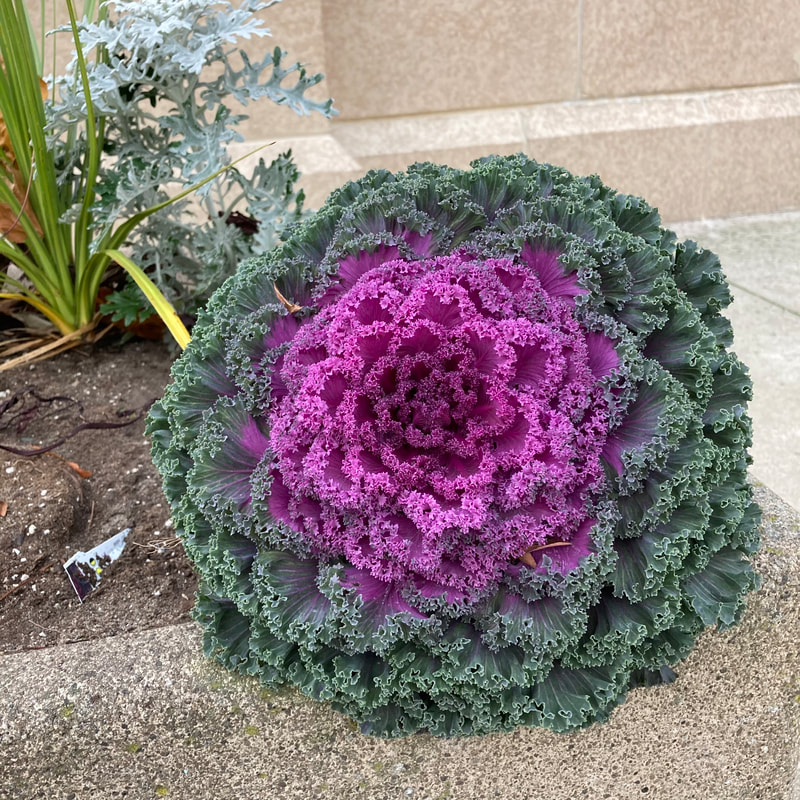|
Photo and article by Donna Iverson
I am what the French call a flaneur, someone who indulges in the art of strolling. I enjoy walking the neighborhood streets checking out people’s yards, gardens, window boxes, and potted plants. Occasionally, I encounter a real person and indulge in a short chat, at a safe social distance, of course. This fall and into the winter, my curiosity was drawn to what looked like colorful cabbages in flower pots along a city sidewalk. The snow was falling but these bright pink centered orbs seemed oblivious to the cold. On doing a little research, I found out that they were not cabbages at all but flowering kale. Although the difference between flowering kale and ornamental cabbage is only detectable by the shape of the outer leaves..... kale being curly and cabbage smooth. While the other flowers sharing the pots were withering and looking frozen, the flowering kale was thriving in December, in Michigan. And not only thriving but looking down right defiant. A member of the plant family Brassica, flowering kale is indigenous to Europe and is not a North American native. But doubt we have to worry about it becoming invasive. Seeds of flowering kale were first offered for sale in seed catalogs in 1936. It is best grown, by buying plants at your local garden store or nursery. It is hardy to zone 2, tolerating winter temperatures down to 5 degrees. While it thrives in containers, it is also a good edging plant in your landscape or along the borders of gardens. It grows to be about 12 to 18 inches tall and looks more like a flower then a vegetable. And although you can eat it, it is bitter compared to its culinary cousins, regular kale and cabbage. Flowering kale comes in a variety of shades, including red, pink and purple. Unfortunately, both deer and rabbits love it. It likes a lot of sun and is not fussy about soil type. A biennial, decorative kale flowers the second year so most people grow it as a summer annual.
0 Comments
Your comment will be posted after it is approved.
Leave a Reply. |
Archives
April 2024
Categories |

 RSS Feed
RSS Feed